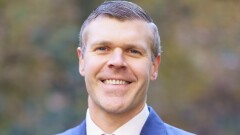Digital Insurance spoke to Chris Skarinka, chief operating officer of the professional lines and public risk groups at Tokio Marine HCC. He leads a team of 100 staff members to support the carrier's property and casualty coverage of public entities such as police and fire departments and water and sewage authorities. Skarinka and the team assess their risks and organize data and risk operations. Recently, Tokio Marine HCC began using an underwriting workbench from
How Tokio Marine HCC builds its underwriting risk capabilities
January 19, 2023 2:09 PM

DANIELORTIZPHOTOGRAPHY
